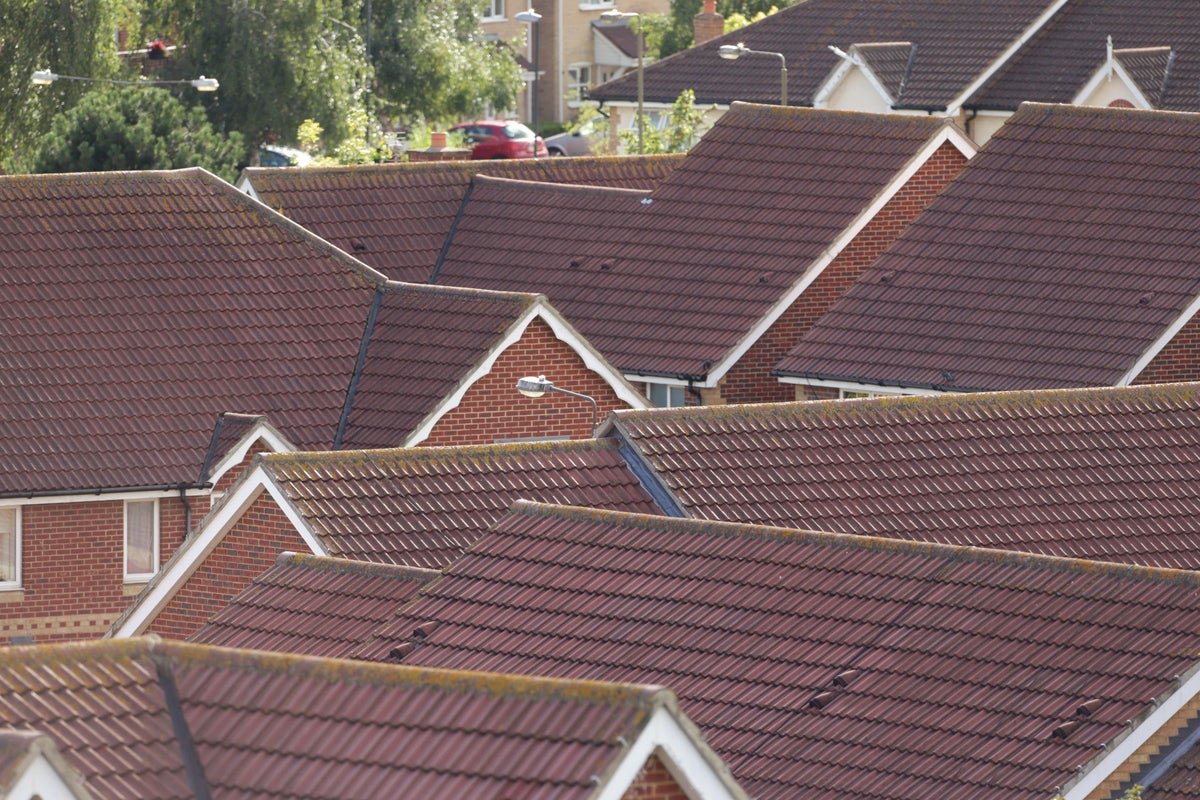
The average UK house price fell by 0.4% in September, but it remains higher than the level recorded in the month that the Bank of England started its run of rate rises, according to an index.
On a month-on-month basis, average house prices have been falling for six months in a row.
But Halifax, which released the index, said the average property price remains 1.0% above the level seen in December 2021, the month when base rate started to edge up, from 0.1% to 0.25%.
Its report said: “House prices have proven more resilient than expected over that period, despite higher mortgage rates suppressing market activity.”
The Bank of England’s recent decision to hold the base rate at 5.25% ended a run of 14 consecutive increases.
Property prices dropped by 4.7% annually in September, with southern England continuing to see most downward pressure on prices, Halifax added.
The typical UK home now costs £278,601, which is around the level seen in early 2022, Halifax said.
The average property price remains more than £39,000 above pre-pandemic levels, despite being around £14,000 below a peak recorded in August 2022.
Kim Kinnaird, director, Halifax Mortgages, said average UK house prices “remain some £39,400 higher than in March 2020, such was the extraordinary growth seen during the pandemic.
“Activity levels continue to look subdued compared to recent years, with industry data showing lower levels of new instructions to sell homes and agreed sales.
“Borrowing costs are the primary factor, given the impact of higher interest rates on mortgage affordability. Against this backdrop, homeowners inevitably become more realistic about their target selling price, reflecting what has increasingly become a buyer’s market.
“However, with base rate now likely to be at or around its peak, we are seeing fixed-rate mortgages deals ease back from recent highs.
Many economists and financial markets predict that base rate will remain higher for longer, with any significant cuts appearing unlikely until inflation gets closer to the Bank of England’s 2% target— Kim Kinnaird, Halifax Mortgages
“Wage growth also remains strong, which has helped with affordability, with the house price-to-income ratio now at its lowest level since June 2020 (at 6.2 in September).
“Many economists and financial markets predict that base rate will remain higher for longer, with any significant cuts appearing unlikely until inflation gets closer to the Bank of England’s 2% target.
“Overall, these factors are likely to keep mortgage rates elevated in comparison to recent years, constraining buyer demand and putting downward pressure on house prices into next year.”
Iain McKenzie, CEO of the Guild of Property Professionals, said: “While the recent unexpected decision by the Bank of England to maintain the base rate at 5.25% will be a relief for mortgage-dependent buyers, this rate is still significantly higher than last year. This has led many potential buyers to adjust their expectations and hold firm during price negotiations with sellers.”
Nicky Stevenson, managing director at estate agent group Fine & Country, said: “The property market is offering a much stronger supply of homes than it did during 2021, when we saw frantic buying activity, and this is giving buyers much more choice and headroom to haggle – though it is also playing a part in pushing down prices during negotiations with sellers.”
Tom Bill, head of UK residential research at Knight Frank, said: “The financial pain entering the system will continue next year as people roll off fixed-rate deals, but there will be an improvement in sentiment, that vital lubricant in the housing market.
“We therefore think most of the UK’s house price correction will happen this year and modest single-digit annual growth will return after the next general election.”
Lenders have made a flurry of rate cuts in recent weeks, but attractive offers can sometimes mask higher arrangement or product fees, while some providers are also weaving in separate booking, valuation or conveyancing fees on top— Alice Haine, Bestinvest
Jeremy Leaf, a north London estate agent, said: “Results confirm what we are seeing on the ground – business is bumping along at a new, lower level as buyers and sellers are encouraged partly by expectations of lower interest rates, and higher rents making refuge in the lettings market less likely, particularly for those taking their first steps on the ladder.”
Alice Haine, personal finance analyst at investment platform Bestinvest said: “Lenders have made a flurry of rate cuts in recent weeks, but attractive offers can sometimes mask higher arrangement or product fees, while some providers are also weaving in separate booking, valuation or conveyancing fees on top.
“Ultimately, better rates and a potential end to further interest rate rises will do little to ease the financial pain for prospective buyers and existing homeowners in the short-term. Mortgage rates of today remain significantly higher than the all-time lows of 2021, before the (Bank of England) began its aggressive rate hiking cycle.”
Mark Harris, chief executive of mortgage broker SPF Private Clients, said: “While everyone is on the watch for potential headwinds, on the whole lenders are much more confident in their ability to price products. There is much less volatility in the cost of funds than was the case just a few months ago, while there is also a growing feeling that base rate may have peaked.”
Here are average house prices and the annual change, according to Halifax. Regional annual change figures are based on the most recent three months of approved mortgage transaction data:
East Midlands, £234,446, minus 4.1%
Eastern England, £325,393, minus 4.5%
London, £525,678, minus 4.8%
North East, £167,196, minus 1.9%
North West, £223,007, minus 2.4%
Northern Ireland, £184,108, minus 0.2%
Scotland, £201,594, minus 0.8%
South East, £376,450, minus 5.7%
South West, £293,615, minus 5.5%
Wales, £214,585, minus 3.6%
West Midlands, £247,448, minus 2.8%
Yorkshire and the Humber, £201,350, minus 2.8%







